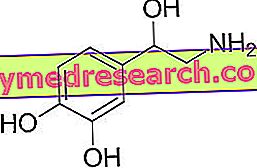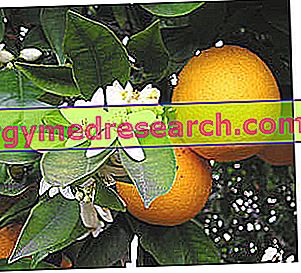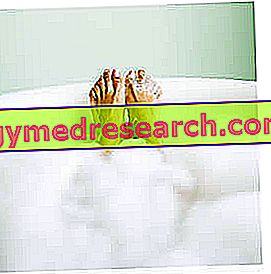Generality
Cosmetic acne creams are a valid complement to medical therapy. In fact, let's not forget that acne is a disease and as such it must be treated with the help of specific medications prescribed by the doctor.

In this article we will try to analyze the most effective acne creams, distinguishing the cosmetic formulations - natural and not - from the pharmacological ones that require a medical prescription.
Essential requirements
A dermocosmetic treatment for acneic skin involves the use of various ingredients capable of acting in synergy, enhancing the final effect of the product. While acne creams must be prepared with a view to reducing all the symptoms generated by acne lesions (itching, redness, blackheads, papules, pustules, etc.), on the other these products should act at the root of the problem, until completely eradicating the root cause. However, it is good to point out that acne-stricken patients mainly seek creams or other cosmetics (especially) to improve the appearance of the skin, whereas products of which they do not feel a direct need (such as creams with filters sunscreen and moisturizing creams, however important to protect the skin and keep it healthy).

But an acne cream must also meet other essential requirements, resulting in:
- Dermopurifying and sebum normalizing;
- Refreshing;
- Effective in the short term;
- Effective in reducing hyperkeratinization of the pilo-sebaceous duct (blocked by corneocytes);
- Delicate for the skin;
- Suitable for sensitive skin;
- Exfoliating (comedolytic action);
- Effective in stimulating cell renewal;
- Effective in reducing inflammation of the pilosebaceous glands;
- Enriched with moisturizing agents and protective photos (UVA and UVB filters);
- Ideal pH: an acne cream should have a slightly acidic pH to reduce sebum production.
Dermopurifying and sebum normalizing
The Propionibacterium acnes bacterium plays a decisive role in the appearance and development of acne; for this reason, an effective anti-acne cream should limit as much as possible the bacterial proliferation in the acne lesions. At the same time, an acne-worthy cream should exert a sebum normalizing action, limiting, as much as possible, the exaggerated production of sebum typical of acne-prone skin. For this purpose, the ideal recipe for preparing an effective acne cream provides the generous use of antibacterial, bacteriostatic and sebum normalizing substances.
Depending on the ingredients used in the formulation, an acne cream may or may not require a medical prescription: it is clear that a natural cream, made with diluted essential oils or active ingredients extracted naturally, can be purchased even without a doctor's prescription; nevertheless, an expert's opinion - be it a dermatologist, a herbalist or a general practitioner - is always advised.
Ingredients
What ingredients should contain a purifying and sebum-normalizing acne cream?
An acne cream with a purifying and sebum-normalizing action can be formulated with ingredients of different origins, such as natural ingredients (of vegetable or mineral origin) and ingredients with a disinfectant and antibacterial action, very useful to fight the bacterium mainly involved in the onset of this disorder : the Propionibacterium acnes .
Leaving aside the active ingredients for anti-acne activities for which a doctor's prescription is necessary, the main ingredients - natural and non-natural - that can be found - alone or in combination - inside acne-purifying acne creams will be briefly described below. and sebum normalizing products that can be purchased without a prescription.
Essential oils
Essential oils are among the best known natural anti-acne ingredients. In fact, there are countless essential oils with extraordinary antiseptic virtues (disinfectants).

Witch hazel extract
Witch hazel extract ( Hamamelis virgiliana ) is a natural source of tannins, gallic acid, flavonoids and terpenes, active ingredients with known astringent, anti-reddening and dermo-purifying properties. Because of these virtues, the witch hazel phytocomplex is used in cosmetics to prepare creams against acne.
Burdock Extract
The phytocomplex extracted from the root of bardana ( Arctium lappa ) is a mine of caffeic acids, inulins, mucilages, phytosterols and polyacetylene sulphonates with sebum normalizing and dermo-purifying properties. Applied directly on the acneic skin (in the appropriate dilutions), the burdock extract is an excellent remedy for calming the itching and redness caused by acne: the soothing virtues of the mucilage contained in it make this plant an ideal ingredient for preparing acne creams and other cosmetics dedicated to the treatment of oily, impure and acneic skin.
Birch Extract
Even the extract obtained from BETULLA leaves ( Betula alba ) is a rather common natural cosmetic ingredient in the creation of acne creams. Indeed, its active ingredients (flavonoids, caffeic acid, ascorbic acid, tannins, vitamin C etc.), acting in synergy, confer extraordinary dermo-purifying, flaming, astringent and antioxidant virtues to the product in which they are added.
Green Tea Extract
The extract of green tea leaves ( Camelia sinensis ), rich in tannins, boasts astringent, antioxidant, sebum normalizing and dermo-purifying properties: for this reason, its phytocomplex is a natural cosmetic ingredient very much required to formulate acne creams.
Kaolin
Kaolin is a sebum-normalizing and opacifying substance able to make sebum less fluid thanks to its adsorbent action: an acne cream formulated with kaolin improves the aesthetic appearance of the skin, making it visibly less shiny and unctuous. Kaolin-based acne creams also exert a good exfoliating action.
Azelaic acid
Azelaic acid is a sebum-normalizing and anticomedogenic substance used in the preparation of acne creams to balance sebum skin production. Azelaic acid is able to limit the formation of sebum and free fatty acids in the skin, effectively inhibiting the enzyme 5-alpha-reductase *.
* We briefly recall that an excess of the 5-alpha-reductase enzyme is often the cause (or con-cause) of disorders such as acne, seborrhea and androgenetic baldness.
Moreover, thanks to its antibacterial and bacteriostatic properties (especially against Propionibacterium acnes ), azelaic acid is extremely suitable for the preparation of acne creams. Due to its irritant potential, the use of azelaic acid products requires a medical prescription.
Zinc oxide
Zinc oxide is an ingredient with remarkable healing properties and anti-reddening virtues that make it a cosmetic ingredient suitable for preparing acne creams.
Thanks to these particular characteristics, zinc oxide is also used in the treatment of other skin disorders, such as eczema and dermatosis.
Chlorhexidine and Triclosan
Chlorhexidine and Triclosan are chemicals often included in the list of ingredients for acne creams. In fact, these synthetic substances have antimicrobial, purifying, disinfectant and preservative properties. Therefore, they are particularly useful for combating Propionibacterium acnes.
Benzoyl peroxide
Benzoyl peroxide is another chemical widely used in the treatment of acne. In fact, it has a broad-spectrum antibacterial activity that is particularly effective in contrasting Propionibacterium acnes.
At the same time, benzoyl peroxide has an exfoliating and comedolytic action, which further justifies its use in acne creams.
CONTINUE: Acne cream: ingredients with exfoliating properties, moisturizing, flammable antibiotics »



